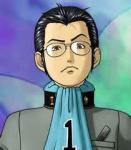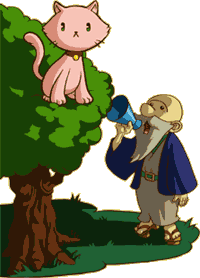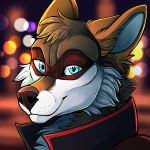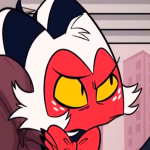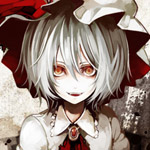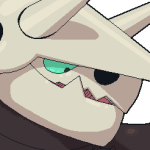This might have a few spoilers to Three Crests, so if you don't want any spoilers, don't click on any links lol
In saying that, Three Crests had a weird start to development, namely that it began with the overworld and everything else has been built upon that. The only goal I really had when I started working on it was that I wanted an overworld that fit within the confines of a 16x8 map, rather than a sprawling mess.
This is the earliest full version of the Three Crests overworld map, from November 2021. For context, the first demo was released in April 2022.
For contrast, here's the latest version - April 2023, for anyone in the future.
It started with Glen Village/the town in the bottom left corner, and then I worked outwards from there. I didn't really have much mapped out beyond what was in my head - for instance I wanted a forest due north of the town, and I knew I wanted it to be six to seven screens. I'd be conscious of how areas connected, and how items would restrict/open up accessibility to those areas. I wanted the map to be a strong, free-flowing map that felt like a living world, rather than something that had been thrown together - Three Crests is a Metroidvania in spirit after all - so keeping the northern areas of the map designated as mountain regions while the south/south-eastern sections were predominantly oceans or water-heavy was something I kept in the back of my mind while designing the world. Particularly on the eastern side of the overworld - it took a lot longer to develop because of these decisions I'd be making.
Pacing was something I had to grapple with quite a lot once the overworld was set up. Compare the two versions of the overworld for instance - town redesigns aside, there's a lot of minor differences, which I'll rattle off as a list:
- The development period for the first demo meant I knew what a rough flow of the quest would be. Player starts in Glen Village, goes to the beach to find the sword in the dungeon there (the Hero's Rest), which then opens up the rest of the world to the player. It was about as much as guiding the player to the Hero's Rest - through FFCs, having bush combos block off areas, etc - as it was allowing the player to find the dungeon via exploration.
- Scripts! Three Crests is extremely script-heavy by design. The first iteration of the overworld was very stuck in my ZC 2.10 dev days, but the more I started to explore scripts such as the Seed Satchel (fast travel) and ledges (one way paths), the more I realised they could be used to provide shortcuts for the player. Instead of forcing them to walk back and forth in a tight maze, why not let the player jump down a ledge and provide a shortcut back to where they began?
A good example of this is the Blacksmith on the new map (top right-ish). To reach it, you have to go through a cave, fight off some Darknuts and then use the Hookshot to traverse the gap between the mountains. I could've kept the original design as it was, but I wanted two shortcuts set up for the player's sake: a Gale Seed tree for fast travel from anywhere on the map, and a set of ledges for a quick way down. It can be painful to set up/plan out if you've already designed the overworld, but I believe quality of life things like that only serve to benefit the player instead of punishing them.
- There's something like 15 dungeon entrances in the Three Crests overworld; five of which can be reached as soon as you get a sword.
The main dungeons aside, I've tended to group the mini-dungeons into three groups during the course of development so I have a rough idea of what the difficulty curve is - early game, mid game, and late game.
Early gets you set up with the basic items - bombs, feather, power bracelet, etc.
Mid are Levels 1 and 2, or are the mini-dungeons that gate off access to Levels 2 and 3.
Late game is Level 3, and optional dungeons that contain item upgrades - in the case of the latter, more difficult mini-dungeons that could potentially be big enough to be standalone dungeons themselves.
- Because the mini-dungeons don't have Heart Containers, overworld chests tend to be populated with a mix of them, rupees or odd seashells (they function pretty much the same as LA's mysterious seashells).
Placing chests in areas where the items used to access them in early game locations was something I thought was a good way to reward players for exploring immediately after clearing a mini-dungeon, while the presumption with mid-game areas is that the player will return later on for one reason or another and realise they can access previously inaccessible chests.
- Cave design is something where I've tried to be realistic with the length of each cave, as well as recognising what works as a shortcut across areas. There's a whole heap of "cave networks" littered across the overworld which can provide the player access to areas that they wouldn't be able to reach until much later in the quest. The desert and forest come to mind as two examples that are in both demos 1.0 and 2.0, but there's definitely more...
Enemy placement is also a big thing too. You need to be very aware of what works best for the area you're in. A tight pathway with eight Tektites and a Zora is not fun. It might be "difficult", but that raises a whole other topic of artificially inflating the difficulty by doing things like that consistently. You're better off having one semi-OP enemy (a Lynel??) on a screen over ten blue Octoroks. It's less grindy, less painful and it shows the player that you're considering the quality of an enemy, rather than the quantity. I feel like a lot of ZC quests - mine included - tend to lean towards the "more is better" ideology when it should be closer to keeping it simple, stupid.
That segues well into my thoughts around keeping a quest interesting, which I think is situational with Three Crests. Some screens are just dedicated cutscene screens, others have a whole bunch of secret combo carryover flags set up that trigger after certain events, there's puzzle screens! Cutscenes like this that open up Level 2 and totally flip an area on its head - it's things like that you need to be constantly considering, especially when reshaping a finished overworld to better suit the quest's needs.
I think the consideration around "repeat traversal" is as much about the size and scope of the oveworld, as much as it is what you have in it. For instance, this overworld map from Atrocity Exhibition, a quest I started and never finished around 2010-12. The areas here are either two to three times the size they need to be, and there's no real way that anything connects up a la a "proper" Zelda-esque overworld. It's linear in every single way; in fact, I'd say all of those quests I made between 2007-2012 were that way inclined. The loop was something like "here's a new area, clear the dungeon, move forward". In hindsight, not exactly an exciting gameplay loop in execution or practice. The pacing is dictated by the quest, not the player and it restricts what you can and can't do as a result.
What stands out for me immediately between Three Crests compared to that one Atrocity Exhibiton map is how I've used the space. The Atrocity Exhibiton overworld map used here is one of three overworld maps in the quest - from memory, the quest was finished up to just after Level 4. That's just too much walking around without having a lot going on, for what it's worth.
Detailing is something that I just touch up on here and there as I go. My priority is a screen's function first, then worrying about whether it's got that screen aesthetic you want going on. I'm not making Three Crests to be SotW: The Quest, but I also want it to be visually appealing. That said, I'm not one to go overboard on ground detail - I like to sit somewhere in the middle where it's not too busy, but not lacklustre and borderline unfinished.
Towns... hoo boy. The original versions of Glen Village and Merrel Bay were quite... generic and not well thought out, to say the least. So towards the end of last year, I tore up and rebuilt them from the ground up. I think the main point with a town is to consider its aesthetic, and then work out a general flow of the area. Is it a hub town? Are there shops? What makes it different from just having a hole in a mountain wall?
I drew an unhealthy amount of inspiration from Pokemon for both Glen Village and Merrel Bay - namely, Gold, Silver and their remakes. Glen Village took a lot of aesthetic ideas from Ecruteak City - old-fashioned, mythical, with Ether's Metamode houses being used to give a more traditional Japanese look. I've always loved the aura of mystique around the Johto region and it was something I wanted to encapsulate in Glen Village - particularly with the torii gates leading toward the Great Merrel Tree. I rebuilt the town around the Great Merrel Tree, as well as incorporating the pathways to the Western Woods and the plains on the northern and eastern sides of town. From there, it was about re-populating the town with only the required houses and NPCs (shops, trading sequences, tutorial hub, etc) and making sure the player would need to walk across town - around five screens - to access the plains, rather than just one or two screens, and missing out on anything that could be potentially interesting to them along the way.
Merrel Bay drew a lot from Goldenrod and Olivine - port town, more modern in contrast to Glen Village. I also thought the hierarchy around the city of Novigrad in the Witcher 3 was something to consider when building the town, with the following districts of Merrel Bay being laid out vertically as follows:
- The upper class - the library, barracks, Governor's office and Arborist's house.
- The middle class - fountain screen, clock shop
- Industrial section - market, tavern, docks
- The mask shop is west of everything else intentionally, separated to show a divide between the shop and the rest of the township. Not really part of the vertical formula, but still significant enough to note
It was a very intentional contrast to Glen Village, where every house feels kind of equal, Mayor's house aside. It's a weirdly industrial town in GB Zelda, and I think the division of "districts" across the town works enough so that the player isn't going to get lost in there too easily.
The one thing I've learned about NPCs and houses is that you only need to make as many as you need. There's no point needing 20 NPCs that spout nonsense when you need one that gives hints or information about areas or items you haven't found yet. Same goes for houses; between the two towns I'd say I've cut about four or five houses - and interiors - from the quest. With the NPCs, the questions I usually ask are:
- What's their main purpose? Are they a trading quest NPC, are they blocking your path for some reason, or are they going to give a hint?
- Will they be "moving" (despawning/spawning on another screen) when you have the required item?
- What will they say in their new position, if they respawn?
Again, probably helps that Three Crests is using just the 16x8 overworld - which means I can't just have half a map dedicated to a town like I would have done in Atrocity Exhibition, LSVO or Protector of the Damn Universe.
Finally, the last part of my essay - don't be afraid to revise and revisit areas you've already designed. If you think you can shoehorn in a big quality of life improvement like ledges, then absolutely do it. Attention to detail on mechanics is a lot more important than whether every screen is SotW worthy in my opinion - attention to detail is what can make a good quest become a great quest.



